When it comes to dangerous and addictive drugs, not many compare to heroin. This potent substance is sometimes called black tar heroin. An opiate derived from morphine, which itself comes from the poppy plant, heroin is fast-acting, highly addictive, and carries the very real potential for overdose and death. According to 2021 data from the National Institute on Drug Abuse, over 1 million Americans used heroin in the past year. Some states are even having law enforcement and other emergency personnel carry an opioid blocker nasal spray called Narcan that can prevent an overdose death.
Opiates come from poppy plants grown in Southeast Asia, Afghanistan, Pakistan, Mexico, and South America. Where the plant is grown and processed into the drug makes a difference in how it looks, its effects, and how it is ingested. There are different types of heroin. It can be:
- A white powder
- A brown powder
- A sticky, tar-like consistency known as black tar heroin
What Is Black Tar Heroin?
Black tar heroin refers specifically to a form of the drug grown and processed in Mexico. The substance gets its name from the consistency of the drug: a sticky mass of black or sometimes reddish goop. Unlike the white or brown powder heroin, Mexican black tar heroin must be smoked or injected by the user. Black tar heroin is faster and cheaper to produce than its counterparts, meaning it costs users less to purchase. However, this also means it is less pure than other forms. The drug is often cut with other substances to increase the amount that’s sold. This can lead to dangerous impurities that can cause serious harm to a user who is unaware of what they are truly taking.
According to the U.S. Centers for Disease Control and Prevention, El Paso, TX, a city along the border of Mexico, saw a 30% increase in overdose deaths in 2020, many of which were attributed to opiate and opioids like black tar heroin and fentanyl.
Why Do People Use Heroin?
People use heroin for a variety of reasons. The drug produces strong, euphoric feelings when ingested. It’s a powerful sedative and can be used to promote relaxation or sleep. Someone may use heroin to:
- Self-medicate and manage a mental health issue
- Cope with difficult emotions such as depression or anxiety
- Escape from reality or stressful situations
- Combat boredom or loneliness
Or they might use it under the influence of family or friends.

Some people may also become addicted after using heroin recreationally. The intense feeling of pleasure can be hard to replicate through other means. This often leads people down a dangerous path of substance use disorder as they become physically dependent on the opiates.
Is Heroin Addictive?
Heroin is an extremely addictive drug due to how it affects the brain. It works by binding to the brain’s opioid receptors, which are responsible for regulating pain and feelings of pleasure. When heroin binds to these receptors, it triggers a surge of dopamine, the neurotransmitter responsible for triggering feelings of pleasure. This flood of dopamine creates a euphoric high that can last several hours. Unfortunately, this intense high is often accompanied by powerful withdrawal symptoms when the effects of heroin wear off, leading users to take more heroin to avoid these uncomfortable feelings. Over time, increased doses may be needed for heroin users to experience the same level of intoxication as before; this is what leads many individuals down the path of addiction.
Signs and Symptoms of Heroin Addiction
There are certain signs and symptoms of heroin addiction that users show. Recognizing these signs and getting them help right away is critical for their overall health and well-being. Black tar heroin use can be easier to spot than powder heroin because it requires certain drug paraphernalia to prepare and inject, like:
- Tin foil
- Spoons (with burn marks)
- Needles or syringes
- Cotton balls
- Eye droppers
Finding some or all of these items in someone’s personal effects could be an indicator they’re abusing black tar heroin.
There are also physical signs to look out for. Some of the most common include:
- Needle marks on someone’s arms or legs
- Glassy eyes with small pupils
- Runny nose
- Changes in mood and behavior
- Changes in sleeping patterns
- Struggles to perform at school or work
What Are the Short and Long-Term Health Risks of Heroin?
Heroin use carries serious health risks. They can be immediate or develop over a period of time. Some troubling short-term health risks of heroin include:
- Nausea
- Vomiting
- Itching
- Lethargy
- Slowed heart rate
- Difficulty breathing normally
- Difficulty forming thoughts
- Constipation
- Sexual dysfunction

The long-term risks associate with heroin use are also troubling. Some of the most common include:
- Permanent changes to the structure and physiology of the brain
- Hormone imbalances
- Kidney, lung, and liver damage
- Deteriorating mental health
- Damage to veins from injecting the drug
- Higher risk of infectious diseases like hepatitis or HIV
- Compulsive, drug-seeking behavior
The dangers of using black tar heroin or any other form of the drug like powder heroin are extreme. Data from the National Institute on Drug Abuse shows that prescription opioid abuse is a factor in the development of a heroin use disorder. Regardless of how or why someone turned to heroin, getting help is the most important thing they can do.
Black Tar Heroin Treatment Options
At Vogue Recovery Center we understand that recovery from heroin addiction can be a difficult journey—one that requires the care, guidance, and oversight of professional addiction treatment counselors. That’s why our team works closely with each client to ensure they reach their full potential in sobriety. We provide clients with a safe, supportive environment where they can be open about their struggles without fear of judgement or stigma.
Our heroin treatment program focuses on helping individuals rebuild confidence and learn healthy coping strategies for dealing with cravings and triggers. We offer holistic therapies such as yoga, meditation, art therapy, and mindfulness practice to promote physical and mental well-being. In addition to group and individual therapy, clients may also benefit from treatments like cognitive behavioral therapy (CBT) and dialectical behavior therapy (DBT) conducted by our accredited and licensed staff.
Vogue Recovery Center offers various levels of care with treatment programs tailored to each individual. Some of the levels of care for substance abuse disorders offered at Vogue Recovery Center include:
Medical detox– The first step in recovery from heroin addiction is detox. That’s when you rid your body of the harmful substance you have been using. Detox can be challenging due to the serious withdrawal symptoms that can accompany heroin addiction. The staff at Footprints to Recovery are on hand 24/7 to help you detox in a safe and comfortable setting.
Inpatient treatment – Also called residential rehab, inpatient care is the most intensive form of treatment for substance use disorders. You spend 24 hours a day for 30 to 45 days at a treatment center focusing on getting better without any outside distractions. You participate in therapy programs prescribed by experienced clinicians and learn more about what it takes to live a sober life.
Partial hospitalization program (PHP) – Less intense than inpatient treatment, a PHP allows you to live at home while still undergoing treatment. It’s like a combination of inpatient and outpatient treatment for those who are ready to take a step down from inpatient care.
Intensive outpatient program (IOP) – IOP offers a level of outpatient care that helps you re-integrate yourself back into normal life. It focuses on preventing relapse and helping you develop valuable coping skills to be used in the future when the urge to use drugs or alcohol rears its ugly head.
Outpatient rehab – One of the final levels of addiction treatment, outpatient rehab involves less time spent at a treatment facility and more time living at home using the skills you’ve learned in recovery. Those in outpatient treatment usually only visit the treatment center once or twice per week. That leaves plenty of time to remain at work or in school while undergoing treatment.
Getting help for a black tar heroin use disorder is imperative for your health and the rest of your life. The health and wellness drawbacks of heroin, along with the threat from law and drug enforcement for using this illegal substance, are troubling and threaten your livelihood. Thankfully, there are drug and alcohol treatment options available. Contact Vogue Recovery Center today and learn more about how we can help.
References:
- https://nida.nih.gov/publications/research-reports/heroin/scope-heroin-use-in-united-states
- https://www.ojp.gov/ncjrs/virtual-library/abstracts/chasing-black-dragon
- https://nida.nih.gov/publications/research-reports/heroin/what-heroin
- https://nida.nih.gov/publications/research-reports/heroin/what-are-immediate-short-term-effects-heroin-use
- https://nida.nih.gov/publications/research-reports/heroin/what-are-long-term-effects-heroin-use
- http://epcounty.com/medicalexaminer/documents/2020EPOME_Annual_Report.pdf
- https://nida.nih.gov/publications/drugfacts/prescription-opioids

Evan Gove

Latest posts by Evan Gove (see all)
- Dangers of Mixing Prozac and Alcohol - September 10, 2024
- Is Prednisone Addictive? - September 9, 2024


 Medically Reviewed by
Medically Reviewed by 